In the enchanting world of gardening, growing edible flowers is like adding a dash of magic to your culinary adventures and your garden’s aesthetic appeal. These vibrant blooms not only elevate your dishes but also invite pollinators, enriching your backyard ecosystem with life and color. Whether you’re a seasoned gardener with a penchant for experimentation or a novice eager to explore the wonders of nature, cultivating edible flowers can be a delightful and rewarding journey. By nurturing these blossoms, you’ll discover a new dimension to your garden, one that tantalizes both the eyes and the taste buds.
Imagine the joy of plucking a fresh nasturtium to garnish a salad or brewing a soothing chamomile tea from flowers you’ve tended with care. This article will guide you through the essentials of growing edible flowers, from selecting the right varieties to tips on harvesting and incorporating them into your meals. You’ll learn about the best conditions to ensure your flowers thrive and how to care for them sustainably, ensuring a bountiful and beautiful bloom season after season. With our practical advice, you’ll be equipped to transform your garden into a vibrant tapestry of colors and flavors.
Delving into the art of growing edible flowers not only enhances your gardening skills but also deepens your connection to the natural world. We’ll explore how these blooms can play a role in sustainable gardening practices, offering benefits beyond the plate. From understanding the nuances of soil preparation to mastering the timing of planting, you’ll gain insights that make the process both manageable and enjoyable. Let’s embark on this fragrant journey together, where every step brings you closer to creating a garden that feeds your senses and your spirit.
Choosing Edible Flower Varieties
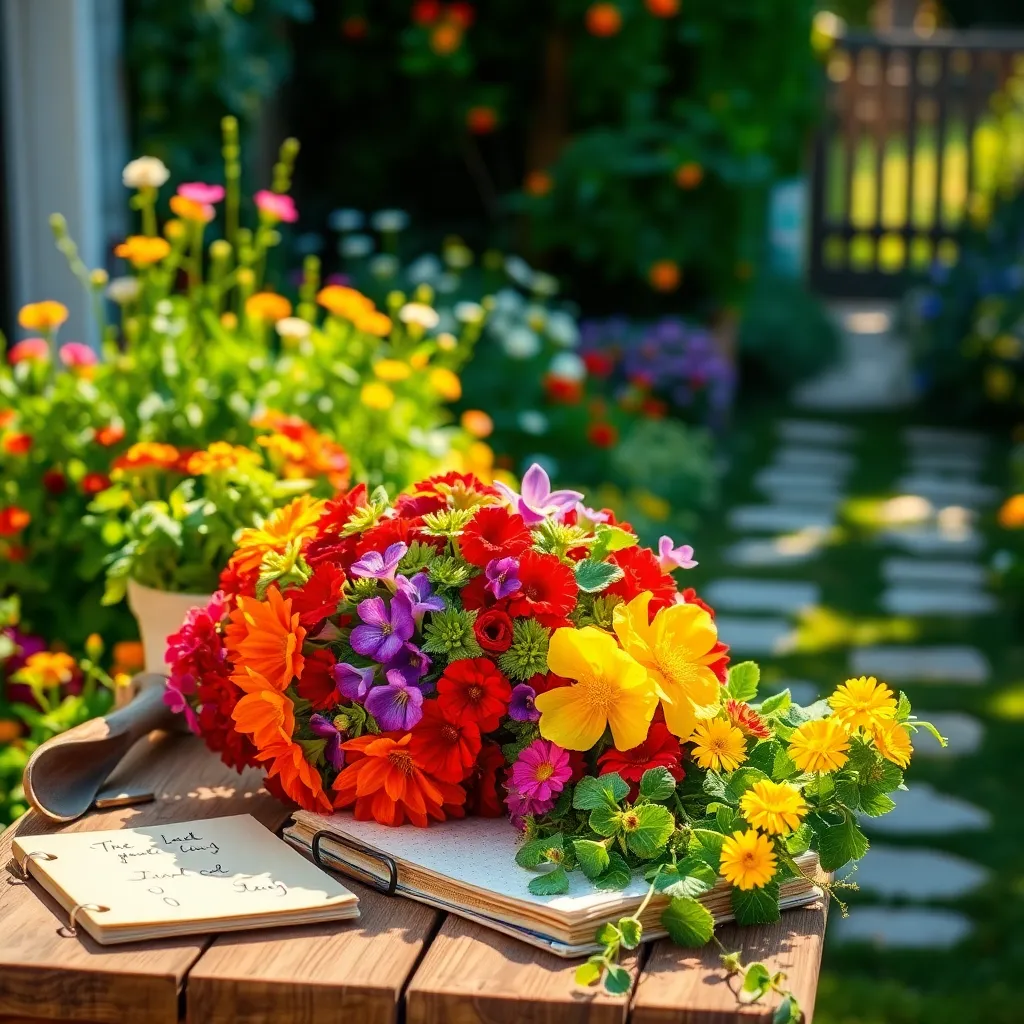
When selecting edible flower varieties, consider both visual appeal and flavor. Flowers like nasturtiums and calendulas not only enhance your garden’s aesthetic but also offer a peppery and tangy taste, respectively.
Choose flowers that thrive in your climate and soil type to ensure a successful harvest. For example, borage, with its cucumber-like flavor, thrives in well-drained soil and full sun.
Beginner gardeners might start with easy-to-grow varieties such as pansies and violas, which are hardy and require minimal care. These flowers prefer cool weather and will flourish in partial shade, making them versatile for different garden settings.
Advanced gardeners may experiment with more delicate options like lavender or chamomile. These varieties require well-drained soil and regular pruning to promote healthy growth and abundant blooms.
To maximize growth, ensure your soil is rich in organic matter by incorporating compost or well-rotted manure before planting. Regular watering is crucial, but be cautious of overwatering, as most edible flowers prefer slightly dry conditions.
- Test soil pH and amend if necessary to maintain a slightly acidic to neutral soil.
- Plant in containers if your garden soil doesn’t drain well; this allows you to control the growing conditions more precisely.
- Deadhead regularly to encourage continuous blooming and prevent plants from going to seed prematurely.
Preparing Your Garden Soil
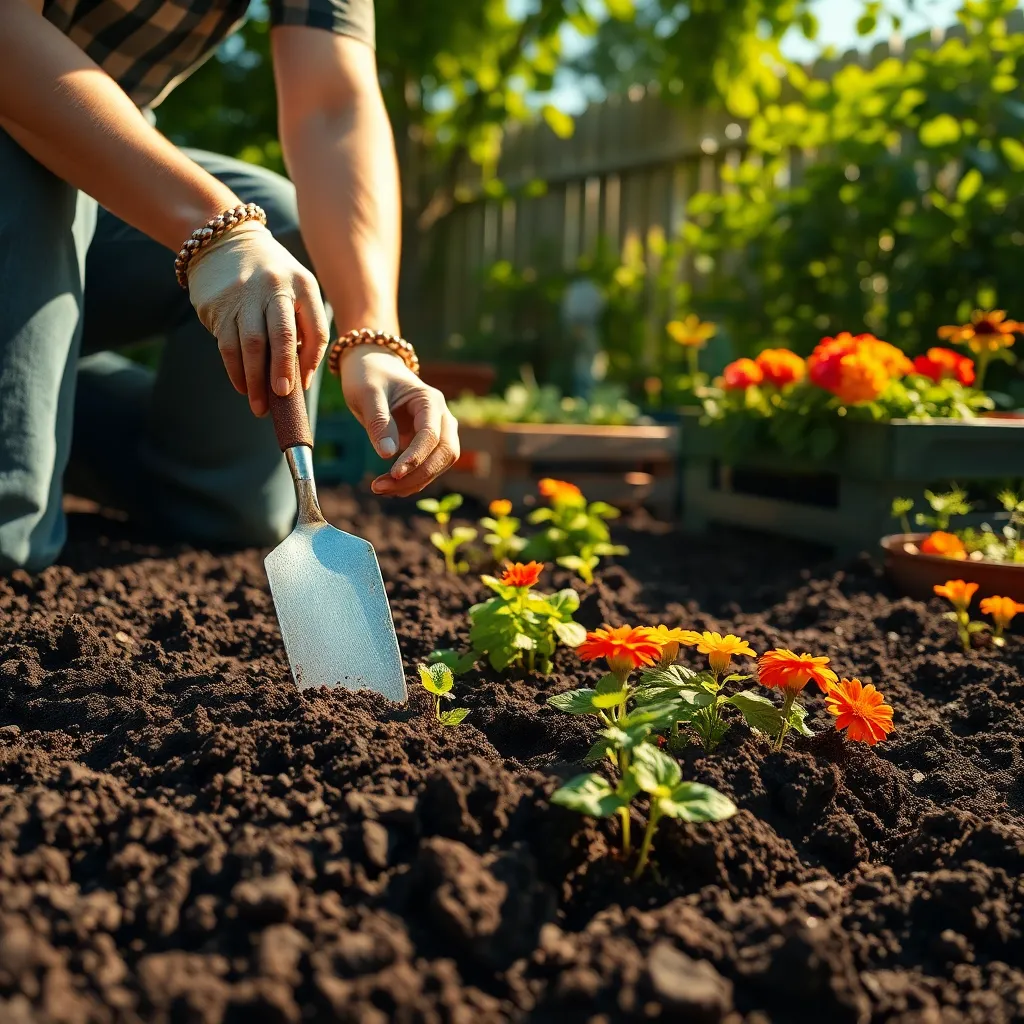
Before planting edible flowers, it’s essential to prepare your garden soil to ensure the plants thrive. Start by testing the soil pH, aiming for a slightly acidic to neutral range, typically between 6.0 and 7.0, for most edible flowers.
To improve soil structure, consider adding organic matter such as compost or well-rotted manure. This not only enhances soil fertility but also improves drainage and aeration, which are crucial for healthy root development.
When working with clay or sandy soils, amend them to create an ideal growing environment. For clay soils, incorporate coarse sand and organic material to improve drainage, while sandy soils benefit from added compost to retain moisture and nutrients.
Ensure the soil is free from weeds and debris, as these can compete with your flowers for nutrients and water. A thorough weeding session, followed by a layer of mulch, can help suppress future weed growth and maintain soil moisture.
Planting Techniques for Success
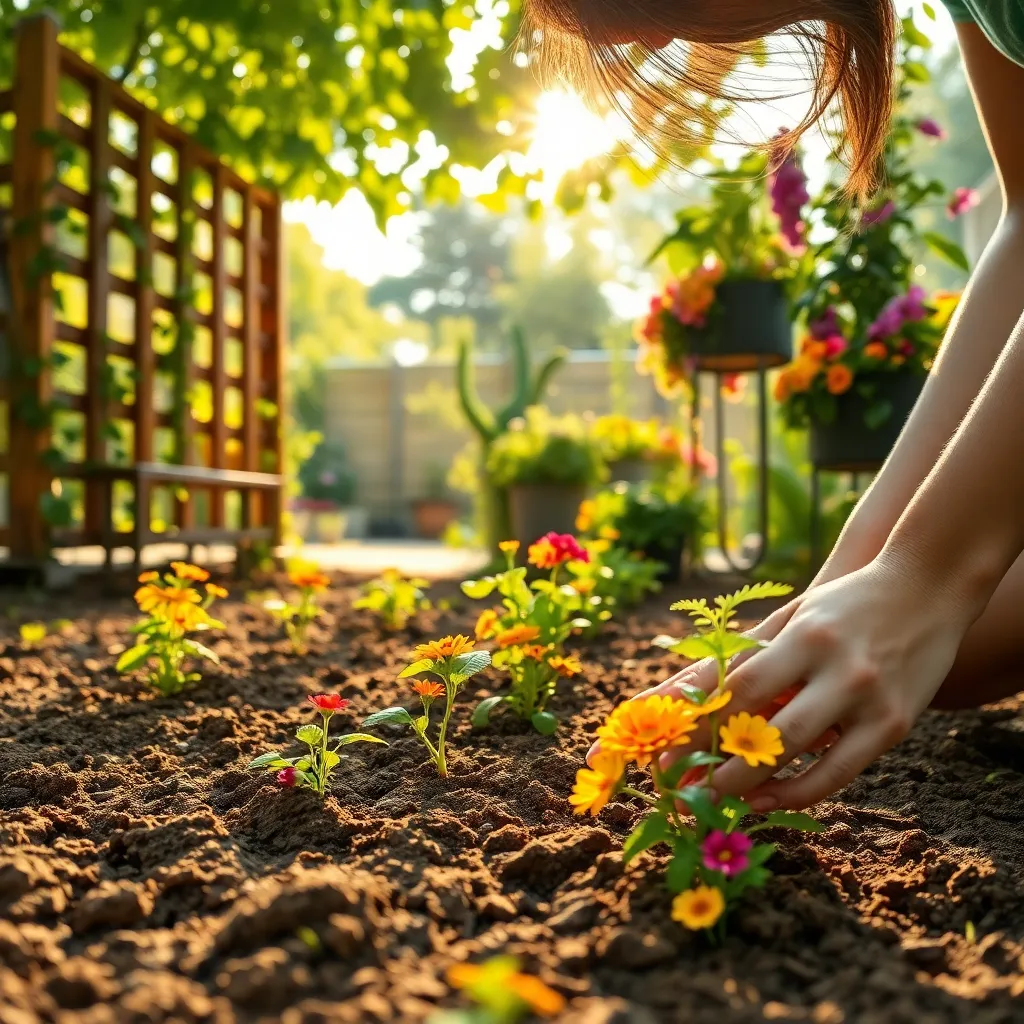
When planting edible flowers, start by selecting a site that receives at least six hours of sunlight daily. Ensure the soil is well-drained, as most edible flowers thrive in conditions that prevent waterlogging.
Begin with seeds or seedlings based on your experience level; beginners often find success with seedlings. Sow seeds directly into the garden after the last frost date, following the depth recommendations on the seed packet for best results.
Watering techniques are crucial; keep the soil consistently moist but not waterlogged, especially during the germination phase. Once established, most edible flowers prefer a weekly deep watering rather than frequent shallow watering, which encourages deeper root growth.
Incorporate mulch around your plants to help retain moisture and suppress weeds. Organic mulch like straw or wood chips is best, as it will decompose over time, enriching the soil with nutrients.
For those looking to optimize growth, consider adding a balanced organic fertilizer every four to six weeks. This practice helps sustain blooms and improves the flavor profile of the flowers you plan to consume.
Caring for Blooming Edibles
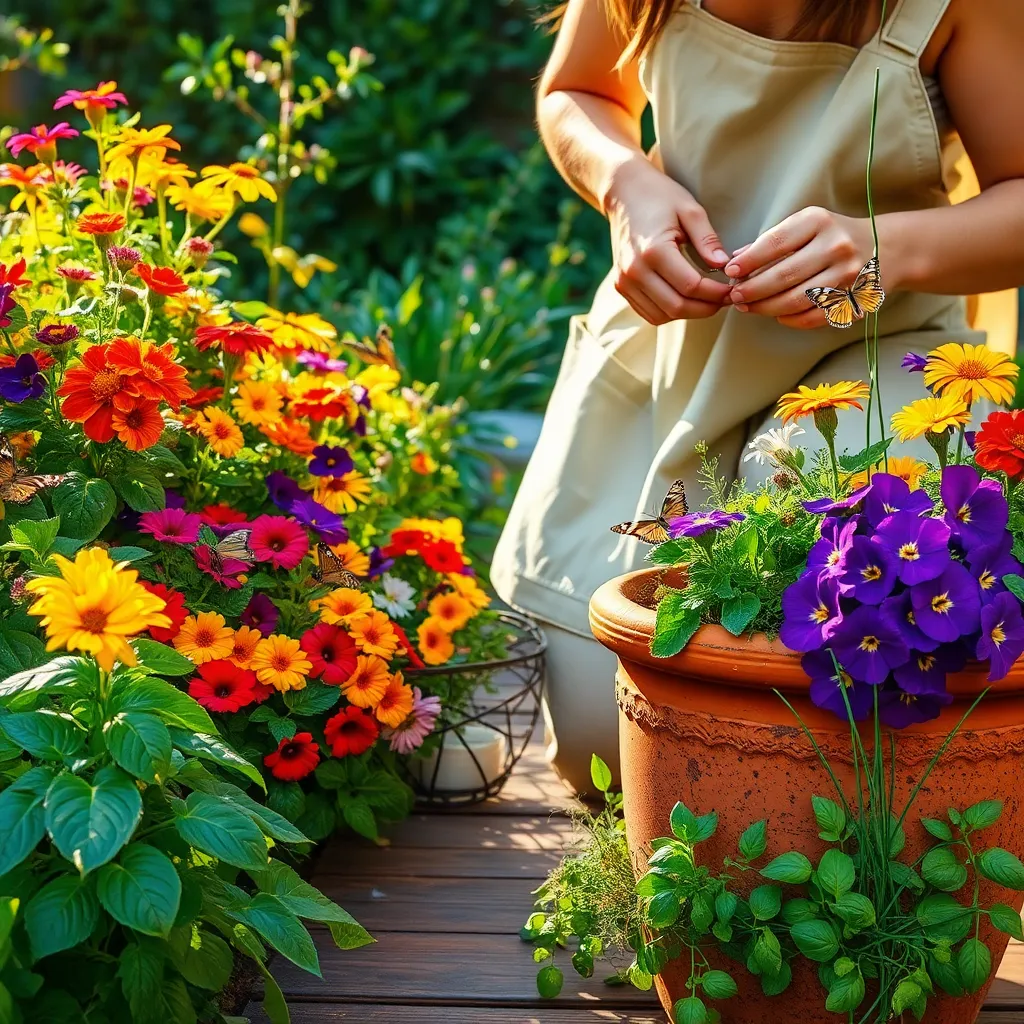
When caring for blooming edibles, it is essential to ensure that your soil is well-draining and rich in organic matter. A mix of compost and sand can help create the perfect environment for your flowers to thrive, promoting not just beauty but also edibility.
Watering is a crucial aspect of nurturing edible flowers, especially during their blooming phase. Aim for consistent moisture without waterlogging by watering deeply once or twice a week, adjusting as needed depending on your climate and soil type.
Fertilization can significantly impact the growth and bloom quality of your edible flowers. Use a balanced, organic fertilizer every four to six weeks, ensuring your plants receive the nutrients they need to produce vibrant and flavorful blooms.
Pruning is another critical care practice for maintaining healthy edible flower plants. Regularly remove spent blooms to encourage continuous flowering and prevent the plants from focusing energy on seed production.
Harvesting and Culinary Uses
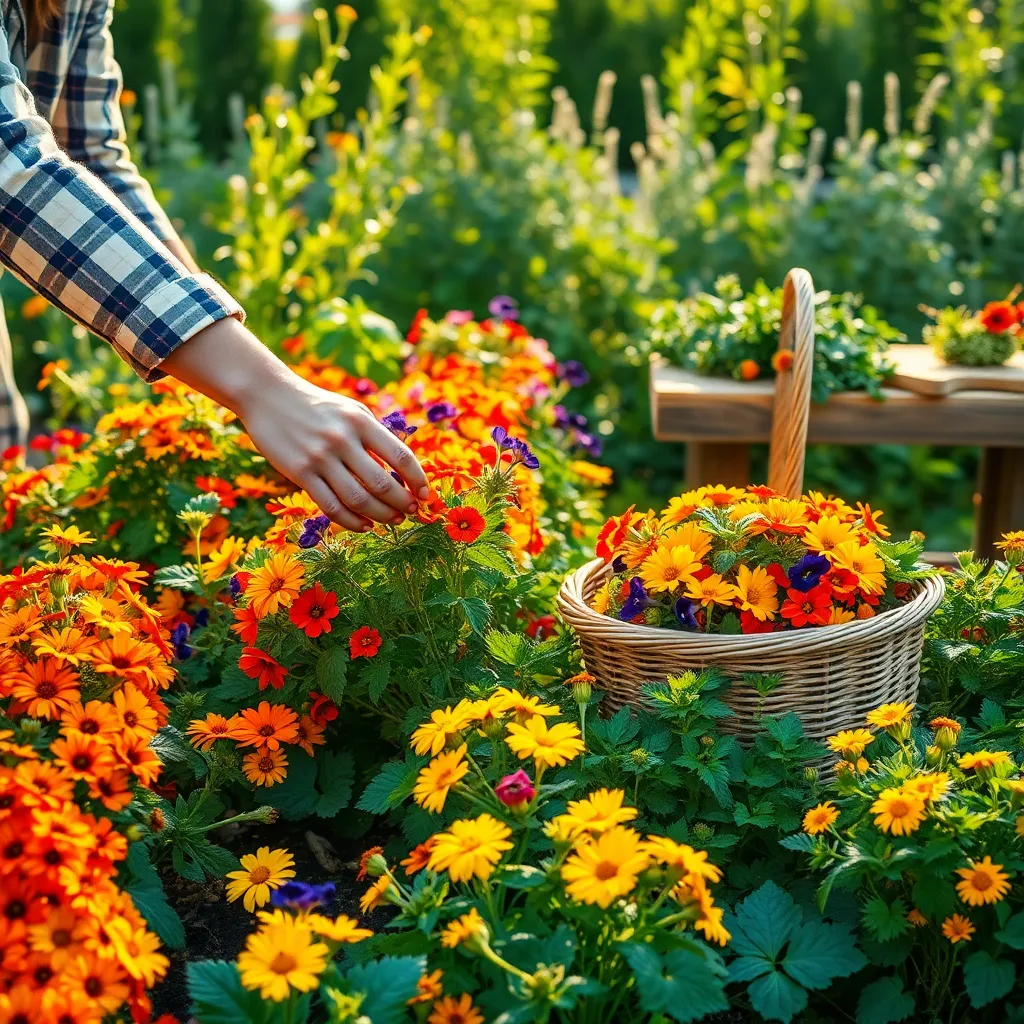
Harvesting edible flowers at the right time is crucial for the best flavor and appearance. Ideally, pick your flowers in the morning after the dew has dried but before the sun becomes too hot, as this is when they are most hydrated and flavorful.
Gently snip each flower with scissors, leaving a bit of stem attached for easy handling. Always choose blooms that are fully open but not yet fading, as this ensures that you capture them at their peak quality.
To keep flowers fresh after harvesting, place them in a container lined with damp paper towels and store in the fridge. You can also use an airtight container to maintain humidity, preventing the flowers from wilting before you’re ready to use them.
In the kitchen, edible flowers can be used in a variety of ways, enhancing both taste and presentation. Try adding them to salads for a pop of color and a subtle hint of flavor that can range from peppery to sweet.
Flowers like nasturtiums, violets, and pansies are particularly versatile, lending themselves well to desserts, drinks, and even savory dishes. For advanced use, consider candying flowers or infusing them into syrups for a gourmet touch in your culinary creations.
Before using any flower in cooking, ensure it is free from pesticides and thoroughly washed. Always research the specific flower to ensure it is safe and non-toxic, as not all flowers are edible.
Conclusion: Growing Success with These Plants
In exploring the delightful world of growing edible flowers in your backyard, we’ve uncovered five key relationship concepts that mirror the nurturing process of a flourishing garden. First, we learned that patience is essential; just as flowers take time to bloom, relationships require time to grow deeply. Second, diversity is key—just as a variety of flowers enriches a garden, diverse experiences strengthen your bond. Third, consistent care, akin to regular watering, maintains the health of your relationship. Fourth, communication, like sunlight, is vital for growth. Lastly, resilience is necessary; even after storms, both gardens and relationships can thrive again.
To immediately infuse your relationship with these nurturing principles, plan a garden date to plant your first batch of edible flowers together. This hands-on experience will cultivate teamwork, patience, and communication.
Don’t let these valuable insights fade away—bookmark this article now to revisit these concepts as your relationship, like your garden, grows. With dedication and care, you’ll find that your relationship, much like a well-tended garden, can blossom beautifully for years to come. Embrace the journey, and watch your love flourish.





